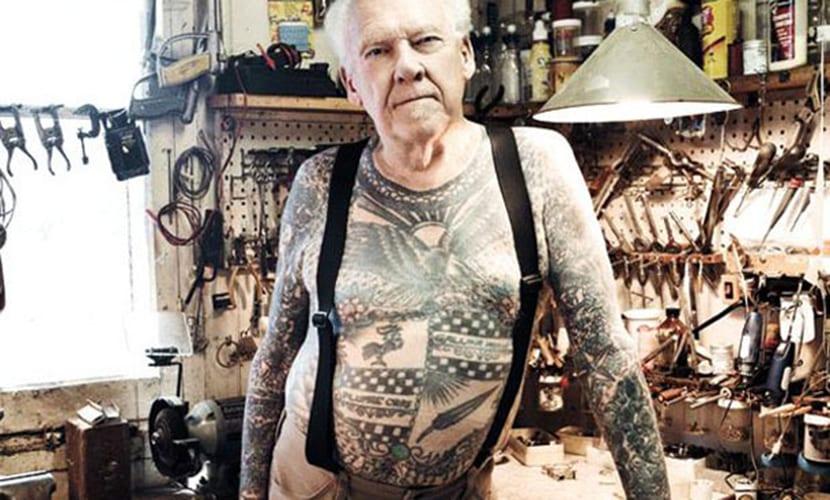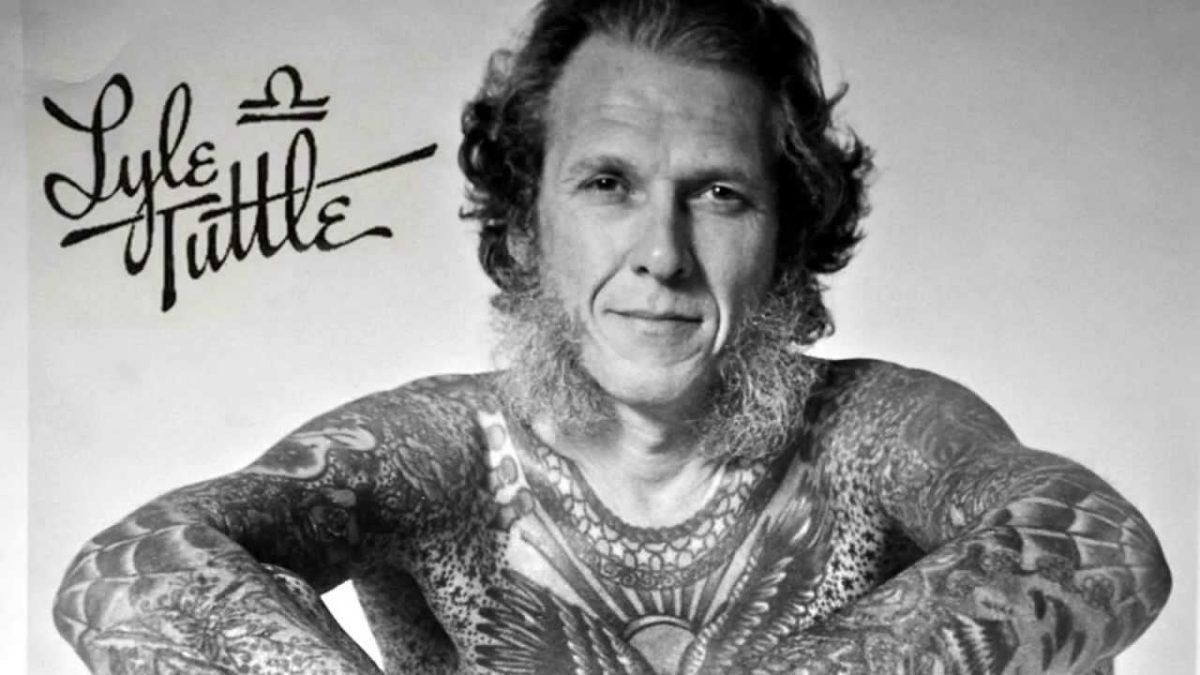
Lyle Tuttle, tattoo artist from 7 continents
Nicknamed the father of modern tattooing, Lyle Tuttle is a legend. An artist adored by the stars, he painted the skin of the greatest personalities of the last century. A collector and avid traveler, he has contributed greatly to preserving and perpetuating the legacy of tattooing for us. Let's go back to 70 years of career.

From farm to tattoo parlors
This son of conservative farmers was born in 1931 in the United States and spent his childhood in California. During the international exhibition Golden Gate, held in San Francisco in 1940 - at the opening of the mythical bridges across the bay - he fell in love with the city. Young Lyle is fascinated by the light and immensity of the buildings. An adventurer at heart, at the age of 14 he decided to go on a bus trip, alone, without a word to his parents, to discover the City by the Bay.
At a bend in an alley, he comes face to face with an old tattoo parlor, and his life takes a decisive turn. For him, tattoos (which mostly covered the bodies of military personnel) were a hallmark of adventurers, and he was one of them. He then walks into the store, looks at the drawings on the wall, and chooses a heart with the word "mom" written on the inside, for which he pays $ 3,50 (about $ 50 today). A gift really not made for the time that little Lyle was proud of what he could afford.
Finding his calling, he was subsequently tattooed and trained by one of the greatest men: Mr. Bert Grimm, who since 1949 allowed him to practice his art professionally in one of his studios located on Pike in Long Beach. 5 years later, he started and opened his first store in San Francisco, which he managed for 35 years.
Philosophy of the artist
Instinctive and daring, he prefers spontaneous tattoos with unnecessarily requested patterns that take hours to paint. He considers tattoos to be tourist souvenirs, like stickers that can be pasted on a suitcase. You must go on a journey to take it with you, with you. It is for these reasons that his first store was located near the bus station!
Women, stars and fame
The talented tattoo artist Lyle Tuttle attracts all the greatest artists to his salon, starting with the legendary Janis Joplin. In 1970, he designed a bracelet on her wrist and a small heart on her chest, which became a symbol of the liberation of women and allowed her to attract the fairer sex between her needles. Over the years, he has tattooed hundreds and hundreds of breasts like the Cosmic Mom. In the same year, he made the cover of a famous magazine. Tumbleweed and is expanding its reputation internationally. Throughout his career, he has tattooed the most fashionable celebrities: singers, musicians, composers and actors such as Joe Baker, The Allman Brothers, Cher, Peter Fonda, Paul Stanley or Joan Baez.
Tattoo History Keeper
Lyle Tuttle is also an avid collector. Throughout his life, he collected countless art objects and artifacts associated with the world of tattoos, some of which even date back to 400 AD. In 1974 he acquired the collection of the renowned English tattoo artist George Burchett, which allowed him to expand his collection. Photos, tattoos, tattoo machines, documents: this is an impressive collection that all tattoo enthusiasts dream of. Although Tuttle stopped tattooing in 1990, he nonetheless continued to lecture on the history of tattooing and the machines used in the field to communicate his knowledge.
Antarctic challenge
Traveling to the four corners of the globe, at the age of 82, Lyle Tuttle decides to pursue his dream of becoming the first tattoo artist on 7 continents. Just like a teenager who fled to San Francisco at 14 to broaden his horizons, this time he heads to Antarctica. Onsite, he set up an ephemeral lounge in the guest house where he was received, accepted his bet and became a legend. 5 years later, on March 26, 2019, he died in the family home where he spent his entire childhood in Ukiah, California.
Leave a Reply